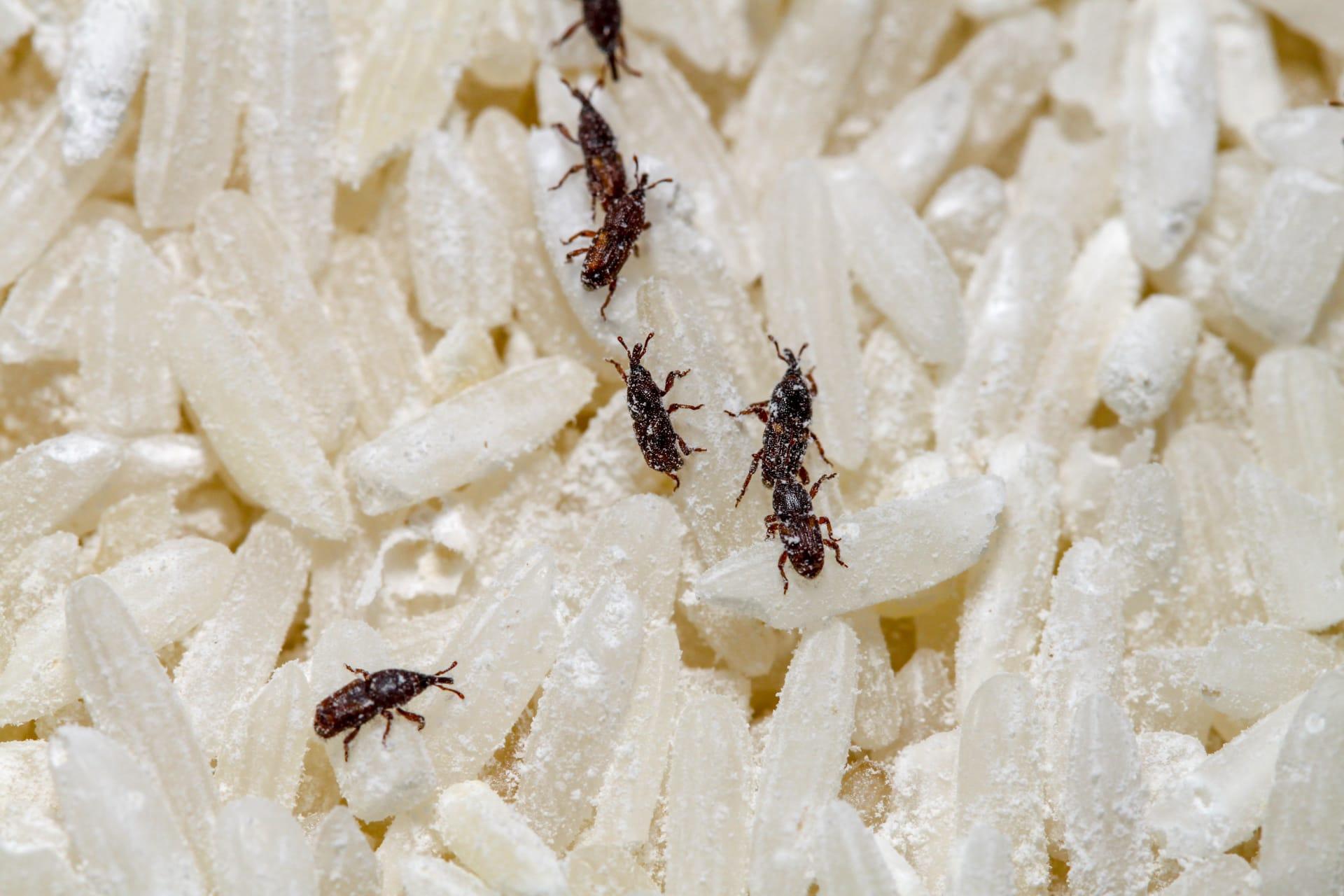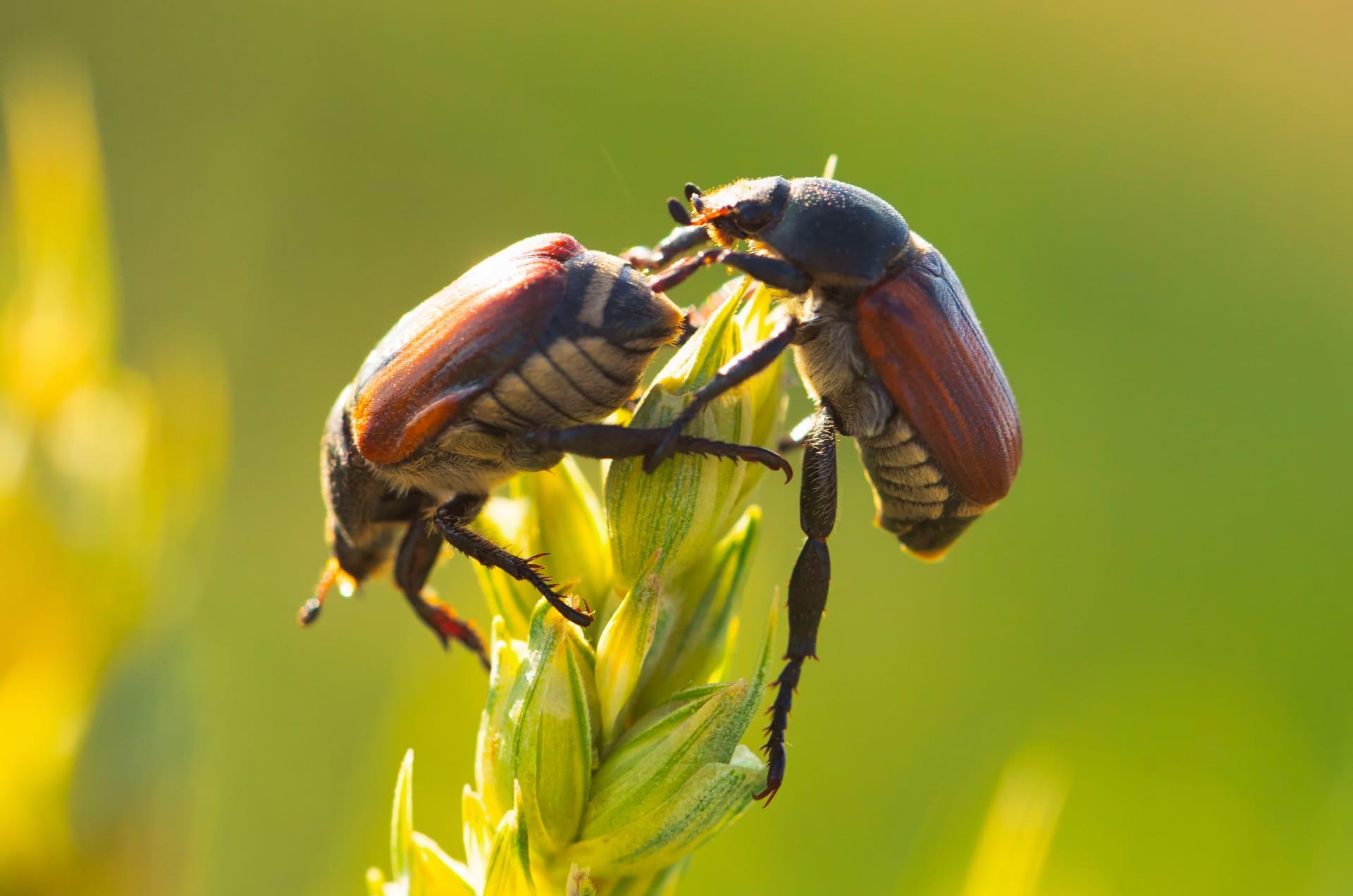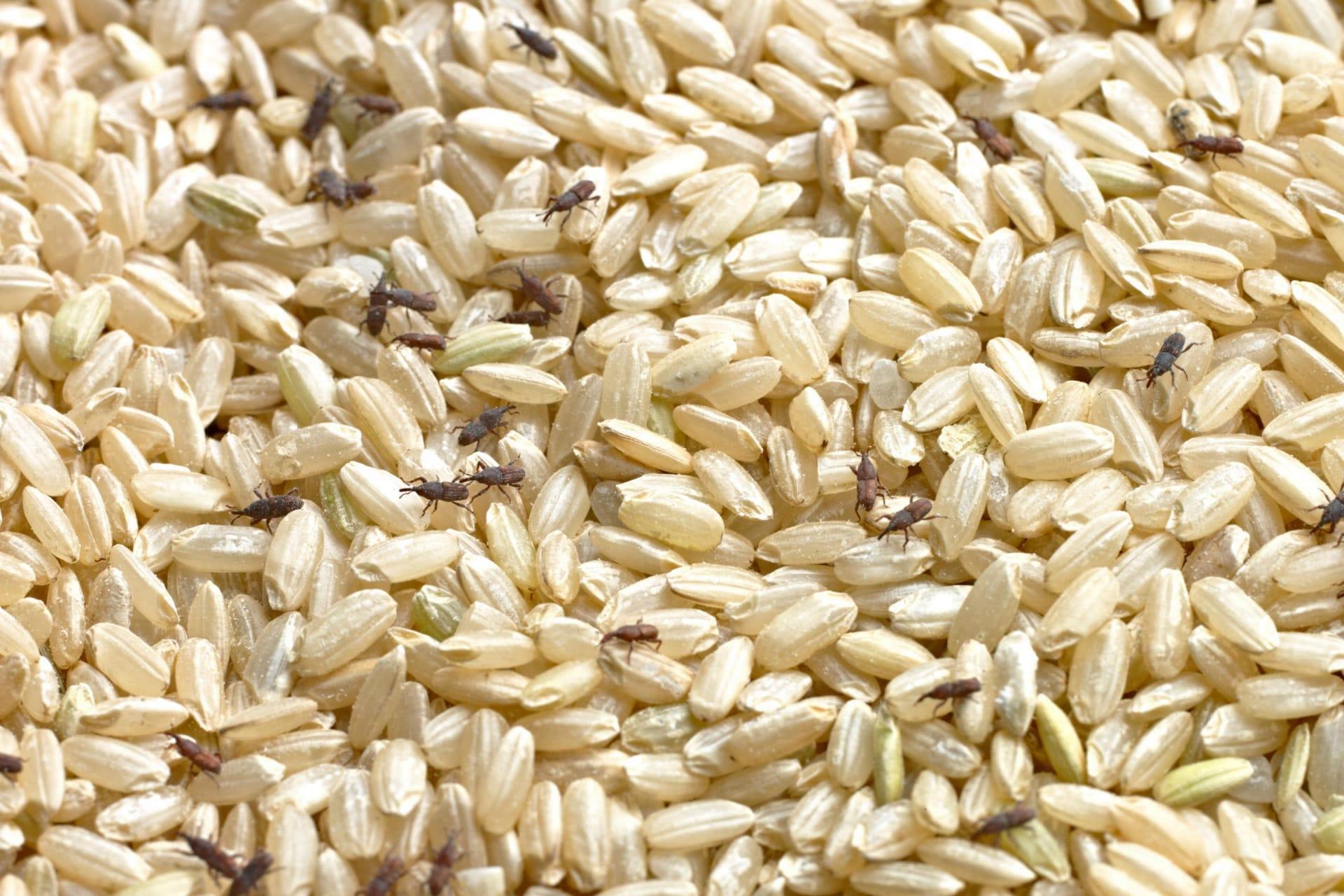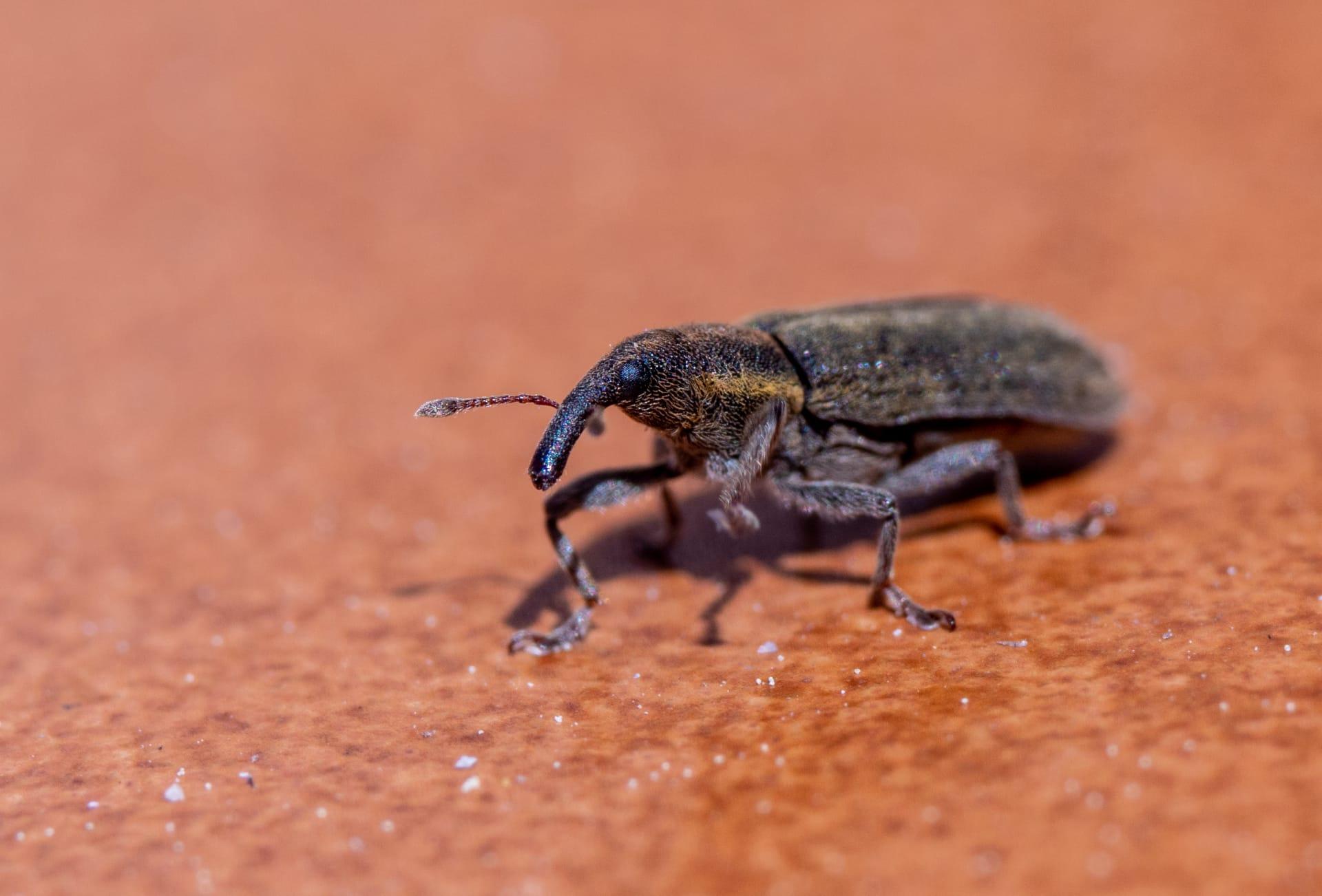1
Rice weevils, known scientifically as Sitophilus oryzae, are small yet remarkable insects with a length of about 2 to 3 millimeters. One of their most fascinating traits is their ability to fly. Unlike many other pantry pests, rice weevils have fully developed wings beneath their distinctive wing covers and can fly relatively long distances. This ability enables them to spread quickly from one grain storage area to another, making them a challenging pest to control in agricultural settings. Their flying capability is not just for relocation; it also plays a crucial role in their survival, allowing them to escape from threats and to colonize new food sources effectively.
Another intriguing aspect of the rice weevil is its method of reproduction and development. Female rice weevils possess a unique ovipositor, an egg-laying organ that allows them to bore tiny holes into grains of rice or other stored products. Once a suitable grain is found, the female weevil lays a single egg inside it and then seals the hole with a gelatinous substance produced in her body. This process not only protects the egg from predators but also provides a secure and nutrient-rich environment for the larva to develop. The larvae feed on the grain from the inside, remaining hidden and protected until they mature into adults. This reproductive strategy is highly effective in ensuring the survival of the offspring and contributes to the rice weevil's success as a widespread pest.

2
The diet of rice weevils is not limited to rice alone; they are known to infest a variety of stored products. These include wheat, maize, barley, oats, and even processed cereal products. Their ability to thrive on such a diverse range of grains makes them a significant threat to global food storage and security. The weevils' strong mandibles enable them to chew through packaging materials, including plastic and thin metal foils, to reach the stored grains. This adaptability in diet and feeding behavior highlights their resilience and the challenges they pose in food storage management.
Rice weevils are also remarkable for their longevity. Under optimal conditions, with adequate food and temperature, these insects can live up to a year. This is particularly long for an insect of their size. During their lifespan, a single female rice weevil can lay between 300 to 400 eggs, ensuring a rapid population growth if conditions are favorable. This high reproductive rate, combined with their longevity, means that rice weevil infestations can escalate quickly and require prompt and effective control measures to prevent significant damage to stored food products.

3
Temperature plays a crucial role in the lifecycle of rice weevils. They are highly sensitive to temperature changes, with their development rate significantly increasing in warmer conditions. In temperatures around 28 to 30 degrees Celsius (82 to 86 degrees Fahrenheit), rice weevils can develop from egg to adult in just about 3 to 4 weeks. However, in cooler temperatures, their development can take as long as 5 months. This temperature-dependent development rate is a key factor in managing and predicting infestations, especially in regions with varying climates.
Another interesting fact about rice weevils is their capability to play dead. When disturbed or threatened, rice weevils often engage in a behavior known as "thanatosis," where they fall on their backs and remain motionless for several minutes. This act of feigning death can protect them from predators who are tricked into thinking the weevil is not a viable prey. This survival tactic is not commonly seen in many other pantry pests, making it a distinctive feature of the rice weevil's behavioral repertoire.

4
Rice weevils demonstrate a fascinating case of sexual dimorphism, which is the difference in appearance between males and females. Unlike many other insect species, female rice weevils are generally larger and have a more rounded abdomen compared to the males. This size difference is primarily due to their reproductive role, as the larger body size allows for the production and carrying of eggs. Observing this physical difference can be a useful tool in identifying and studying rice weevil populations.
In addition to their physical attributes, rice weevils are also known for their resilience to certain control methods. They have shown a remarkable ability to develop resistance to various insecticides. Over time, rice weevil populations can become increasingly immune to chemicals that were once effective, posing a significant challenge for pest control. This resistance development is a testament to their adaptability and survival skills, further complicating efforts to manage their populations in both agricultural and domestic settings.

5
Rice weevils have a unique way of coping with food scarcity. When food sources become limited, these insects can enter a state of diapause, a form of dormancy. During diapause, their metabolic rate slows down significantly, allowing them to survive for extended periods without food. This adaptation is particularly useful during times when their preferred food sources are scarce, such as during certain seasons or in poor storage conditions.
Rice weevils are not just pests; they play an unexpected role in forensic entomology. In cases of stored product contamination, the presence and development stages of rice weevils can help forensic scientists estimate the time of contamination. This application of rice weevil biology in forensics showcases their importance in fields beyond agriculture and pest management, highlighting their role in a broader scientific context.